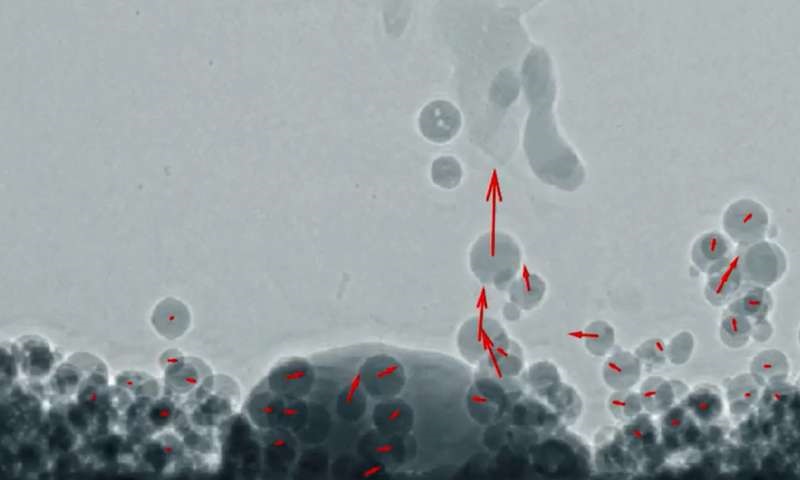
High-speed x-ray microscopy lets Argonne scientists watch in real time as the printer adds layers. Credit: Argonne National Laboratory
What if our military could dramatically reduce the amount of materials and equipment held on the front lines by printing only what they need? Scientists at the U.S. Department of Energy’s (DOE) Argonne National Laboratory are aiming to do this with new advances in 3-D printing.
Using 3-D printing, scientists can produce virtually anything from plastics, metals or even ceramics. Argonne physicist Tao Sun and his collaborators are studying the laser powder bed fusion process for metals through the intense synchrotron X-rays at the Advanced Photon Source, a DOE Office of Science User Facility at Argonne.
“The laser–metal interaction happens very quickly,” said Sun. “We captured the process at rates beyond a million frames a second using the high-speed X-ray instrument at the Advanced Photon Source. We can study the resulting movie frame by frame to examine how the material’s microstructure forms.”
Sun’s project co-leader, materials scientist Aaron Greco, approaches the process from another angle. “After printing, we examine the product’s resulting microstructure and defects,” said Greco. “We use a variety of techniques, including optical and electron microscopy and even tomography at the Advanced Photon Source, to validate the models.”
“Our goal is to explore new possibilities,” said Greco. “Industries are currently limited to a certain set of metal alloys. But what about new ones? If you understand the physical properties related to how to print new alloys, you can adopt these into the process and improve the speed and reliability of printing.”
How would additive manufacturing benefit the defense industry? “This technology can be used in the field to create parts quickly and accurately while also eliminating transportation costs,” Greco said.
The potential applications, said Greco, are nearly endless. Examples include aerospace vehicles, jet engines and lightweighting of vehicles of any type. “Our process enables users to control defect formation with the output being highly reproducible and certifiable. Using this experimental platform enables us to investigate new approaches to printing new and different materials. We’re able to predict and control the process, minimize defects and reduce the need for qualification testing. And we’re finding this benefit has application for any entity in the Department of Defense space.”
Research using titanium enables Greco’s team to study different types of materials and metal alloys, design new alloys or improve the printability and manufacturability of alloys. The team is also creating high-temperature, high-strength alloys that lead to improved outcomes.
Scientists now have the potential to augment the process, Greco said. “Our advances allow users to change the printing parameters to improve the material properties of what they’re printing, to create parts with enhanced hardness, strength or even corrosion resistance.”
According to Keith Bradley, director of National Security Programs at Argonne, the defense industry is likely to be interested in these Argonne findings because the advancements align with the industry’s goals—namely, to keep the United States safe and to proactively prevent adversaries from using technology for nefarious purposes.
“Argonne is one of several labs focused on preventing the proliferation of weapons of mass destruction, including dual-use technologies that can be repurposed from peaceful uses to military applications,” Bradley observed.
“It’s essential for the defense industry to continuously seek a competitive edge,” said Bradley. “For this reason, the industry is always tracking technological innovations to determine whether they can help advance their mission.”
Because military requirements often differ significantly from those of commercial or consumer markets, Bradley said, a national laboratory like Argonne is uniquely positioned to help overcome any obstacles in 3-D printing.
“Argonne’s broad expertise in materials science can help the military understand how to produce things that meet their specifications,” Bradley noted.
Filed Under: Industrial automation




